Menu from Banquet at the Revere House Hotel
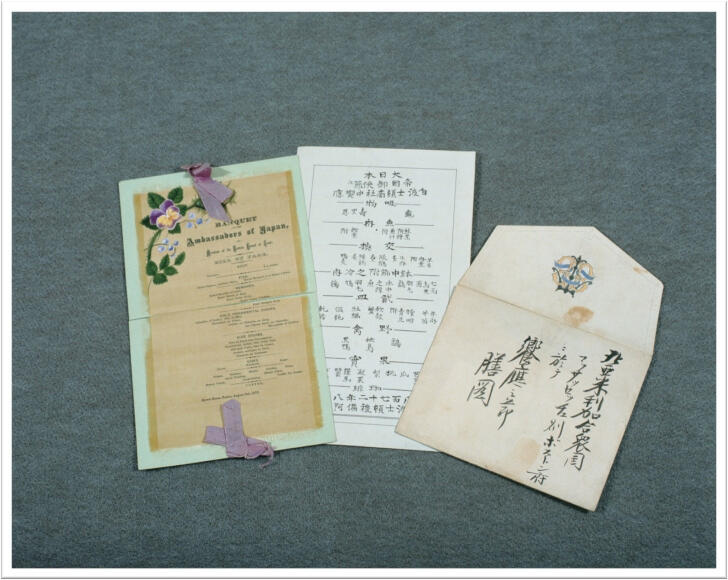
On August 2, 1872, the Japanese embassy arrived at the Revere House Hotel in Bowdoin Square, Boston. The group was greeted with a banquet dinner, hosted by members of the Boston Board of Trade. Menus for the affair were printed stylishly in both Japanese and English. The following day, local newspapers commented on the tasteful decor and elegant food, concluding that the evening was well-suited for the honored delegates from Japan. Full Menu SOUP: Terrapin, à la Julien FISH: Boiled Salmon with Anchovy Sauce,Baked Mackerel, à la Maître d’Hôtel REMOVES: Boiled Shoulder of Lamb,Roast Sirloin of Beef,Roast Green Goose,Roast Young Chicken,Roast Mongrel Duck COLD ORNAMENTAL DISHES: Galantine of Turkey with […]
World’s Peace Jubilee
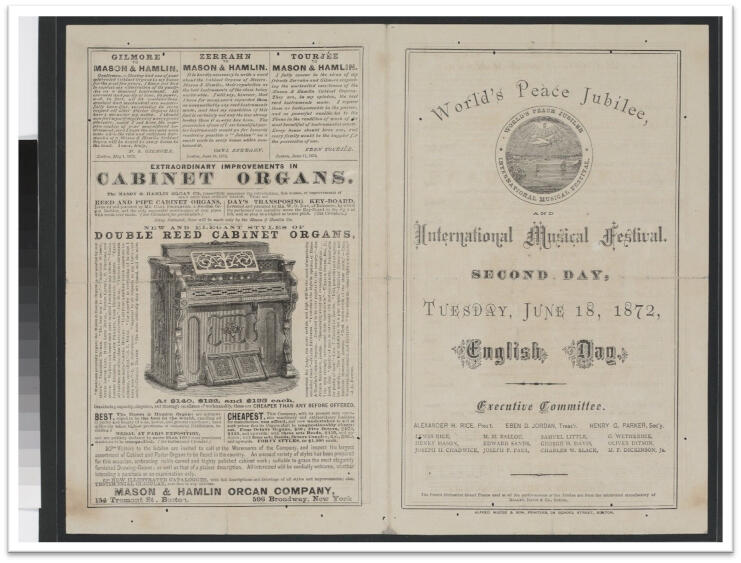
On June 18, 1872, the delegation arrived in Boston and visited the World’s Peace Jubilee and International Music Festival. The momentous summer event was organized to celebrate world peace, following the end of both the American Civil War in 1865 and the Franco-Prussian War in 1871. The music festival included concerts by thousands of musicians and numerous orchestras, bands, and choirs. The performances struck a chord with the delegation, and they were deeply impressed by the profusion of voices that found their way into harmony. Kunitake Kume remarked that there was much to be learned about the artful practice of synchronizing hundreds of voices like instruments. Upon their return to […]
Social Customs
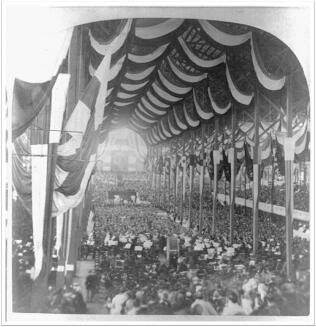
On August 6, 1872, the delegation sailed out of Boston harbor amid cheers and applause from gathered crowds on the shore. The farewell was not the first time the group had been warmly received by the public, and as the boat moved further out to sea Kunitake Kume reflected on the kindness he had experienced throughout their journey. While Kume sometimes didn’t understand the social mannerisms of Americans, such as the rowdy cheering and foot stomping following performances at the Boston International Music Festival, he did believe in the goodwill and amiability of the people. Kume concluded that Japan needed to end its isolation and join what he saw as […]
Department of the Treasury
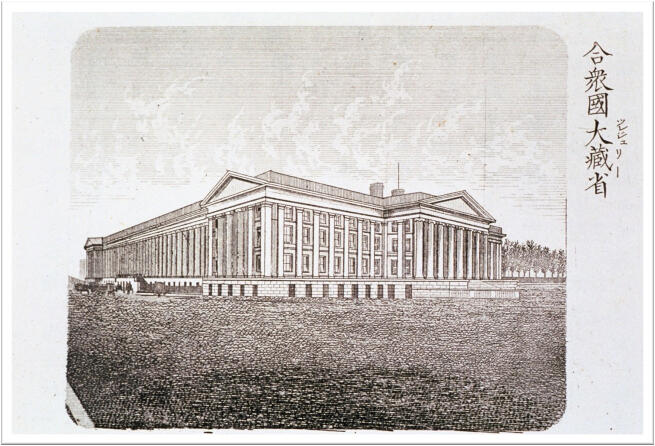
While in Washington D.C the delegates visited the Department of the Treasury, where the nation’s currency was printed. The group was drawn to the intricate process of printing paper money, a method that required efficient collaboration between machines and manual laborers. The delegates were especially impressed by how meticulous the printing presses were, as each was able to create a unique design on the bills. Just as they had noticed at the U.S Printing Office, many female workers were employed in the stations of the Treasury that required the highest level of precision and attention to detail. During the time of the Iwakura Mission the notes used in Japan had […]
Streets of Washington D.C.
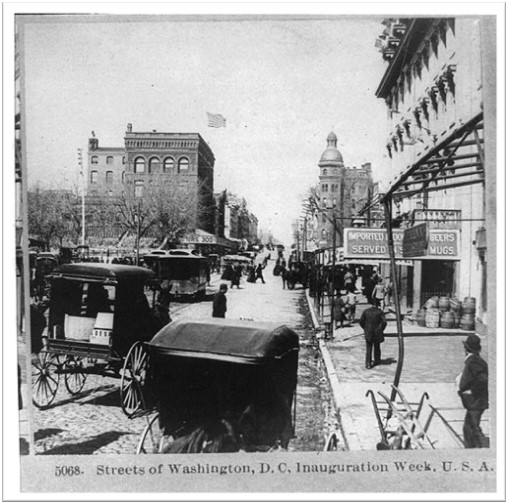
On February 6, 1872, the delegation headed to the United States Capitol building. They arrived via Pennsylvania Avenue, marveling at the immaculate roads surrounded by beautiful winter trees and flora. The group commented that the streets were laid out like a Go board, with the four large avenues – Pennsylvania, Delaware, Maryland, and New Jersey – converving on the great Capitol. Kanitake Kume was impressed by the evenness of the stone road, and made a note that it allowed people to haul loads several times heavier than what was possible on Japan’s roadways. Upon the delegation’s return home, the Meiji government invested heavily in road infrastructure across Japan, striving to […]
Patent Office
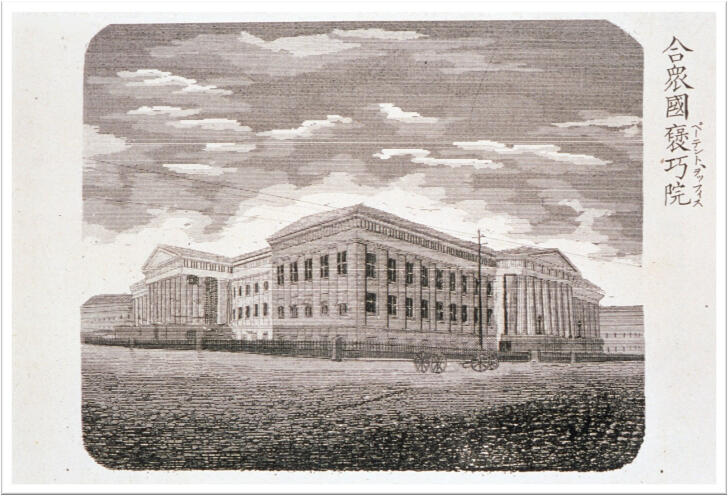
During the afternoon of April 2, 1872, the delegates made a trip to the U.S Patent Office. The group was impressed by the thousands of inventions listed and on display – everything from toys to steamship designs. Kume Kunitake, the avid diarist of the journey, translated the name of the building to, “the Institution for rewarding ingenious inventions” (褒巧院). Kume noted that the degree of recognition given to an invention was determined by its quality. According to him, Americans were most proud of their mechanical and machine-related achievements, most notably the steamship and the eclectic telegraph. Soon after the group returned to Japan, the Meiji government issued an ordinance to […]
Broadway
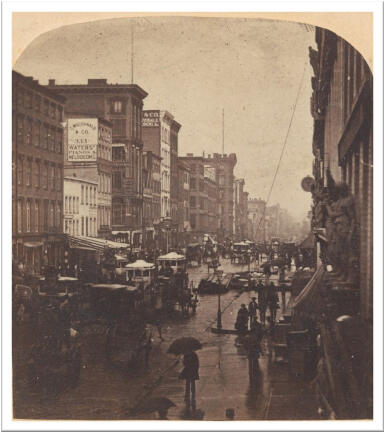
Broadway was a beautifully chaotic boulevard in 1872, and the Iwakura delegation were in awe of the multitude of New Yorkers commuting by carriage, bus, and on foot. Kunitake Kume wrote that the density of the city was unmatched by anything they had experienced before. It seemed as if all roads led back to New York City – a metaphorical Rome for the modern era. The delegates thought Broadway’s cobblestone roads, lined with businesses and stalls selling all types of goods, was comparable to a festival. It seemed to them the busiest street in the world!
Christian Organizations
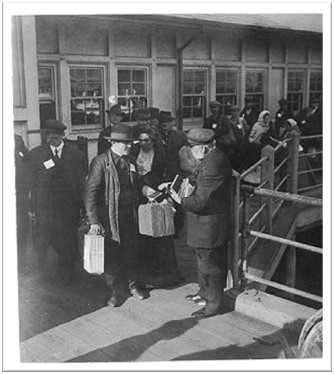
While in New York City, the Iwakura Mission visited the American Bible Society and the YMCA. The Bible Society was an organization that advocated the translation and distribution of the Christian Bible, and presented the delegation with Bibles written in Chinese. Kunitake Kume made note of the popularity of Christianty in America, especially as a tool for people to evaluate the moral character of themselves and others. For Kume and his fellow delegates, this aspect of Christiany, among others, was difficult for them to fully accept. Nevertheless, Kume could tell that Christianity was a positive influence on American civilization, acting as a unifying religion and compass for moral standards. In […]
Establishment of the Consulate General of Japan in New York
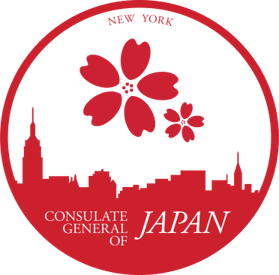
This document, is a report regarding the establishment of the Consulate General of Japan in New York, sent from the Chargé d’Affaires Arinori Mori. It was sent on November 26, 1872, just over three months after the Iwakura Mission left the United States.
Erie Canal
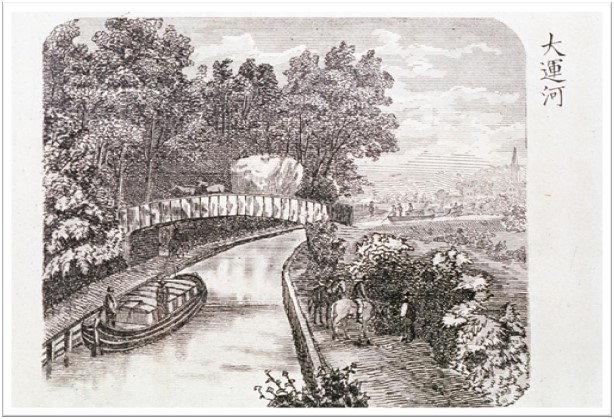
The Iwakura Mission traveled north to Syracuse and Niagara Falls on a track that ran beside the Erie Canal. Kume wrote it was, “one of the best-known canals in the world,” and that its “gently flowing waters” were a “vital waterway” in the nation. Completed in 1825, the Canal connected the Hudson River with the Great Lakes Basin. This link gave New York City a great advantage over other seaports – it was connected to both the Atlantic Ocean and the interior of America. At the time of the mission, the canal’s dimensions had been expanded, and boats with a capacity of 240 tons were able to carry commercial goods […]
